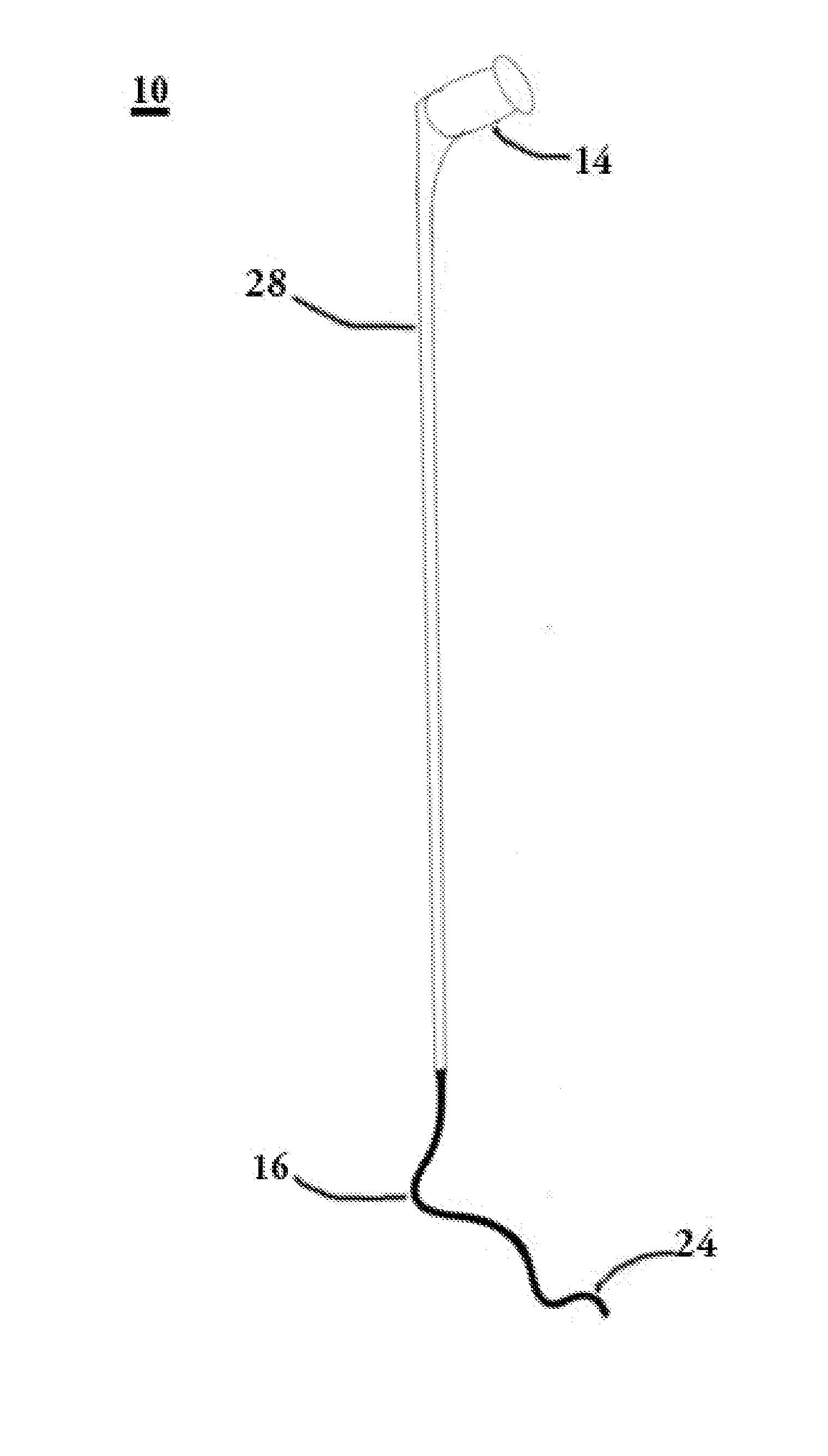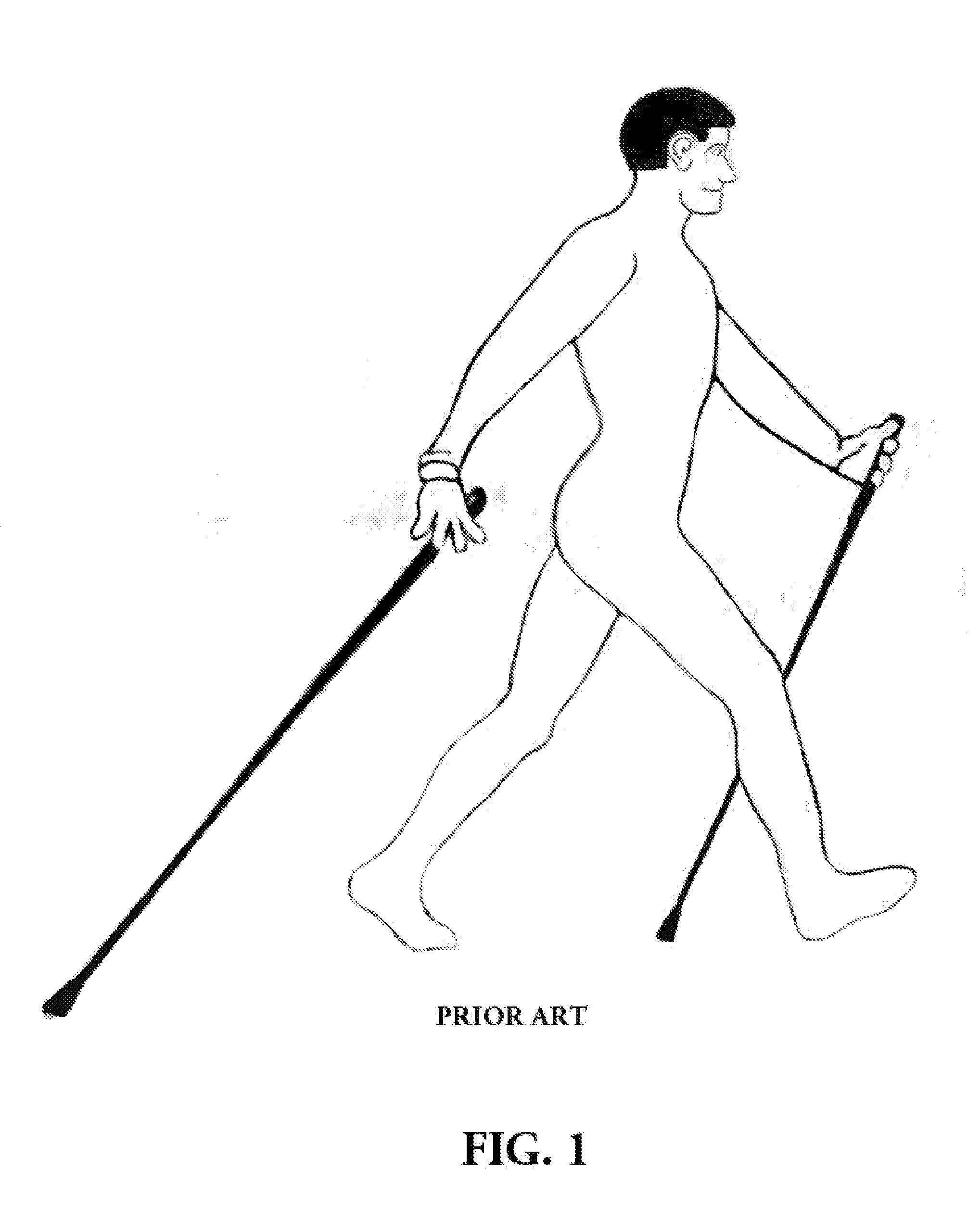Walking Stick with S-Shaped Flexure Mechanism to Store and Release Energy
a technology of flexure mechanism and walking stick, which is applied in the field of walking stick, can solve the problems of limited ability of standard walking stick, limited range of terrain conditions, and limitation of standard walking stick ferrule, and achieve the effects of reducing wasted energy, reducing discomfort, and increasing the ability of a person to walk
- Summary
- Abstract
- Description
- Claims
- Application Information
AI Technical Summary
Benefits of technology
Problems solved by technology
Method used
Image
Examples
Embodiment Construction
[0033]Referring to FIG. 2, therein is shown a preferred embodiment of the invention. This walking stick, generally designated by numeral 10, is molded as a single unit of fiberglass, carbon, aircraft aluminum, or other composite material. The appropriate material will be selected to achieve desired duty cycle and performance characteristics. Walking stick 10 includes a straight shaft 28 terminated at the upper end with a handgrip 14 and at the lower end with an S-flexure spring 16 and optionally a foot 24. Walking stick 10 may be constructed of ceramic, laminated linear fiberglass, aircraft aluminum, or other composite material. As those skilled in the art of extrusion molding are aware, the S-flexure spring 16, the foot 24, the straight shaft 28, and the handgrip 14 may be molded of laminated linear fiberglass as a single unit by adjusting the thickness and orientation of the premolded composite material at the appropriate positions along the length of the walking stick. In a prefe...
PUM
 Login to View More
Login to View More Abstract
Description
Claims
Application Information
 Login to View More
Login to View More - R&D
- Intellectual Property
- Life Sciences
- Materials
- Tech Scout
- Unparalleled Data Quality
- Higher Quality Content
- 60% Fewer Hallucinations
Browse by: Latest US Patents, China's latest patents, Technical Efficacy Thesaurus, Application Domain, Technology Topic, Popular Technical Reports.
© 2025 PatSnap. All rights reserved.Legal|Privacy policy|Modern Slavery Act Transparency Statement|Sitemap|About US| Contact US: help@patsnap.com



